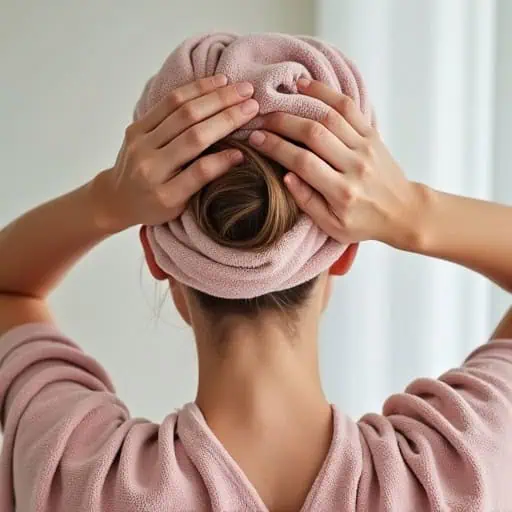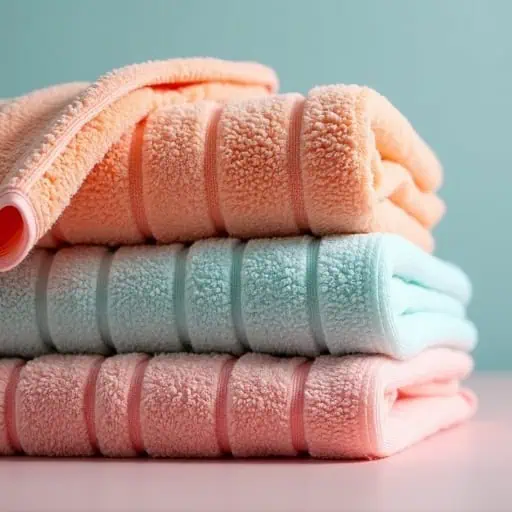Microfiber towels have become a staple in households, gyms, and salons due to their superior absorbency, quick-drying properties, and gentle texture. Whether you’re looking for a microfiber towel for hair, a large microfiber towel for the beach, or an everyday option, understanding the material, benefits, and care tips will help you make an informed choice.
| Feature | Benefit |
|---|---|
| High Absorbency | Quickly wicks away moisture, ideal for hair and skin. |
| Lightweight & Compact | Easy to carry for travel or gym use. |
| Gentle on Hair & Skin | Reduces frizz and irritation compared to cotton. |
| Durable & Long-Lasting | Resists wear and tear with proper care. |
| Fast Drying | Prevents mildew and odors. |
What Makes a Microfiber Towel Unique?
Unlike traditional cotton towels, microfiber is made from ultra-fine synthetic fibers (typically polyester and polyamide). These fibers create a dense, plush texture that enhances absorbency while remaining lightweight.
Key Advantages:
- Absorbs 7x its weight in water – More efficient than cotton.
- Non-abrasive – Safe for delicate surfaces (e.g., cars, electronics) and sensitive skin.
- Lint-free – Ideal for cleaning or hair drying.
Types of Microfiber Towels
1. Microfiber Towel for Hair
Designed to minimize friction and reduce breakage, these towels are a favorite for curly or frizz-prone hair.
Features:
- Smaller size (12″ x 12″ to 20″ x 40″).
- Ultra-soft weave to prevent tangles.
- Often comes with a turban twist design.
2. Large Microfiber Towel
Perfect for beach trips, post-workout showers, or spa use.
Features:
- Sizes range from 30″ x 60″ to 40″ x 70″.
- Lightweight yet highly absorbent.
- Sand-resistant for outdoor use.
3. Sports & Gym Microfiber Towels
Compact and quick-drying, these are ideal for athletes.
Features:
- Antibacterial treatments to reduce odor.
- Packable design for gym bags.
Material & Quality Considerations
Not all microfiber towels are equal. Quality depends on:
- GSM (Grams per Square Meter):
- Under 200 GSM – Lightweight, less absorbent (good for travel).
- 200–400 GSM – Balanced absorbency and durability (best for daily use).
- Over 400 GSM – Ultra-plush (luxury feel, but slower drying).
- Fiber Blend:
- 80% polyester / 20% polyamide – Standard for absorbency.
- Split microfiber – Higher cleaning efficiency (common in automotive towels).
Durability & Care Tips
To extend the lifespan of your microfiber towel:

- Use warm water (under 140°F).
- Avoid fabric softeners (they clog fibers).
- Wash separately from lint-producing fabrics.

- Bleach or harsh detergents.
- High-heat drying (air-dry or low-heat tumble).
Microfiber vs. Cotton Towels: Pros & Cons
| Feature | Microfiber | Cotton |
|---|---|---|
| Absorbency |      |
   |
| Drying Speed |      |
  |
| Softness |     |
     |
| Durability |     |
   |
| Price | $$ | $ |
Choosing the Best Microfiber Towel for Your Needs
For Hair Care:
- Opt for a microfiber towel for hair with a turban design.
- Prioritize GSM between 200–350 for softness and absorbency.
For Travel or Gym:
- Compact, fast-drying towels (under 200 GSM).
- Antimicrobial treatments prevent odors.
For Home or Beach:
- Large microfiber towel (400+ GSM) for maximum comfort.
- Look for reinforced edges for longevity.
Final Thoughts
A microfiber towel is a versatile, high-performance alternative to cotton, especially for hair care, travel, and active lifestyles. By considering size, GSM, and care requirements, you can select the best option for your needs. With proper maintenance, a quality microfiber towel can last years, making it a practical investment.



